Easy Shrimp Creole has a stew-like sauce made with aromatics, onions, tomatoes, carrots, and celery. It’s thick sauce has layers of bold flavors that meld together with shrimp. It is a one-pot dish that comes together in 20 minutes, allowing room for many variations even on weeknights!
I’ve written about the history of migration in food: whether it is Pineapple Fried Rice or Chicken Empanada, the compelling part of the recipe is how a dish morphed and adapted to exploration, trade, and ultimately migration. After all, there’s no classic pizza without the American tomato or the European cheese, is there? To me, Creole is one of the ultimate expressions of culinary mélange.
Origin:
To describe Creole cuisine is to articulate the history of its epicenter, the city of New Orleans. Founded by the French in 1718, surviving by the kindness of the Native American tribes who taught the settlers how to cultivate corn or use sassafras, La Nouvelle-Orleans, instantly became a melting pot of what was termed the ‘new world’ cuisine. As the city grew, waves of German and Swiss settlers were encouraged to migrate bringing with them their tradition of industrious farming and baking.
The introduction of the classic French culinary tradition can be traced to the Ursuline nuns, whose sisterhood included members of the French aristocracy and the upper middle class. It was these nuns who also introduced the many herbs that are central to Louisiana cooking. The African tradition of cooking using green herbs and vegetables including eggplant and okra was introduced to the table, along with the signature long and slow cooking process.
The most salient change was the sale of Louisiana to Spain. This was when the term ‘Créole’ became widespread. It was derived from the Spanish ‘criollo’, originally describing a person of Spanish descent born in the Americas. With the Spanish introduction came the gastronomic traditions of Spain along with the adapted traditions of the Aztecs, Incas, and Mayan and their use of peppers and tomatoes.
It is impossible to understate the importance of peppers as both a spice additive and a preservative nor would Creole cooking be Creole without the tomato. In combination with the French roux, the tomato would lead to court bouillon, (not to be confused with the French court bouillon or short broth) and the jambalaya, whose European origin can be traced to the Spanish paella.
It was the introduction of the French Acadians when the distinction between Creole and Cajun was introduced. Rather than settle directly in the city, the Acadians settled in swamps and bayous around New Orleans and adapted their cuisine to the bountiful fresh foods from these wetlands. It was this beginning that engendered the Creole association with the urban and the Cajun, with the rustic.
In the mid-1800s, New Orleans played host to Sicilians with their garlic and their rich gravies, Slavs from the Dalmatian coast who introduced oysters, and the Chinese with their quintessential white rice and dried shrimp. If this is not an American dish, I do not know what is. The history of the cuisine reflects the ebbs and tides of history, war, conquest, trade, and migration. In my opinion, it is this tapestry that provides the richness and spice that I love about the easy Shrimp Creole.
Creole cuisine is described as ‘living’ which implies that it has the gastronomic depth and space to imbibe, evolve, and thus continuously redefine itself, without surrendering its rich and diverse history. This Easy Shrimp Creole recipe below honors history with its use of the holy trinity but also provides a unique and healthful twist that I believe celebrates the spirit of the dish.
Differences between Creole and Cajun cuisines:
While I’ve talked of the etymology of Cajun and Creole, they are both natively from Louisiana. That said, there are some tangible differences in the cuisine. Creole cuisine tends to reflect the cosmopolitan history of the many nationalities that migrated to New Orleans, Cajun food tends to reflect more the native French Acadian history. Probably the simplest distinction is that Creole cuisine traditionally incorporates the tomato while Cajun dishes tend not to. Another distinction is that Creole dishes tend to use a roux that is made from butter and flour, while the Cajun roux tends to be made of animal fats or oils.
Frequently Asked Questions:
What is the difference between Shrimp Creole and Shrimp Gumbo?
Shrimp Creole is usually spicier and of thick consistency than Gumbo. Rice is cooked separately and the Creole is served on a bed of fluffy rice. The Shrimp Creole is simmered to desired thickness. Shrimp Gumbo is cooked with rice in the same pot.
How is Shrimp Creole different from Shrimp Etouffee?
It’s important to understand that while this simple Shrimp Creole is made from a tomato base, the etouffee uses butter and flour roux. This makes the Shrimp Creole a lighter sauce than the gravy consistency of the shrimp etouffee. Secondly, while this dish uses bay leaf, tomatoes, peppers, okra, and black pepper, the etouffee tends to use the holy trinity spiced heavily with cayenne pepper making the etouffee, a spicier dish. Similarly, the main difference between jambalaya and shrimp creole is that jambalaya has rice mixed in with the sauce, like the paella or biriyani, but shrimp creole has a sauce distinct from the rice. Shrimp Etouffee has a distinct gravy with a roux as its base. It is spicier than the Shrimp Creole. On the other hand, Shrimp Creole has a tomato base.
What are some variations for this dish?
You could vary this easy Shrimp Creole by substituting the shrimp for chicken or tofu, using other seafood or fish varieties, adding veggies such as okra or sweet potatoes, and serving on a bed of quinoa or cous cous.
Shrimp Creole is a perennial party favorite because its flavor profile is incredibly versatile. Its versatility derives from the fact that this dish can be made with a roux or without one, it can support a variety of proteins, and can also be flavored by a different combination of herbs. I’ve made different versions of the Easy Shrimp Creole, and the recipe below is a fan favorite.
If you’ve tried this recipe or have questions, I would love to hear from you. Please feel free to share (below) your thoughts, comments, or any questions that you might have. And if you like my recipes, you could subscribe to my mailing list for the latest recipes that will be delivered straight to your inbox. From my pen to your table, Bon Appetit! 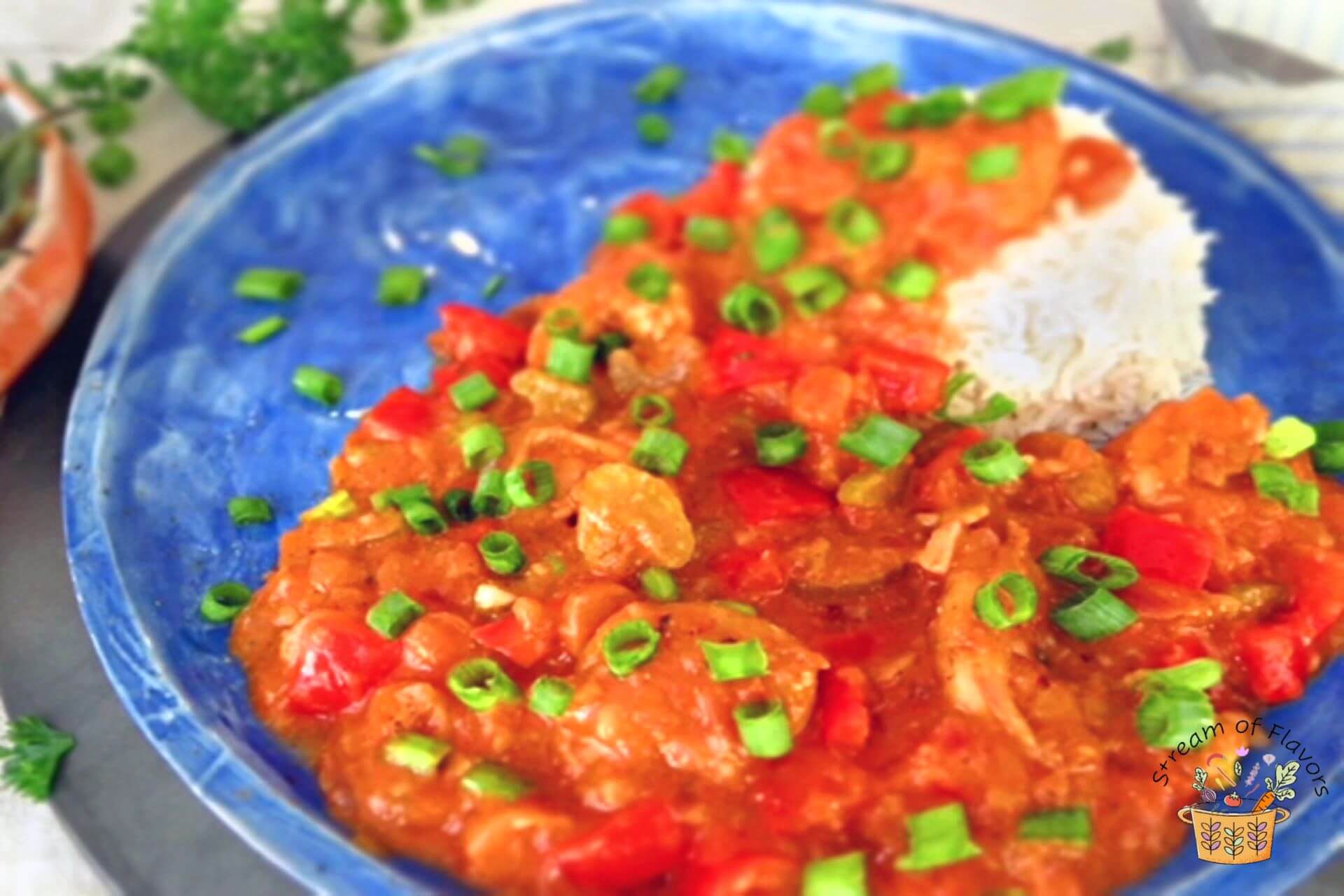
How to make the Shrimp Creole sauce:
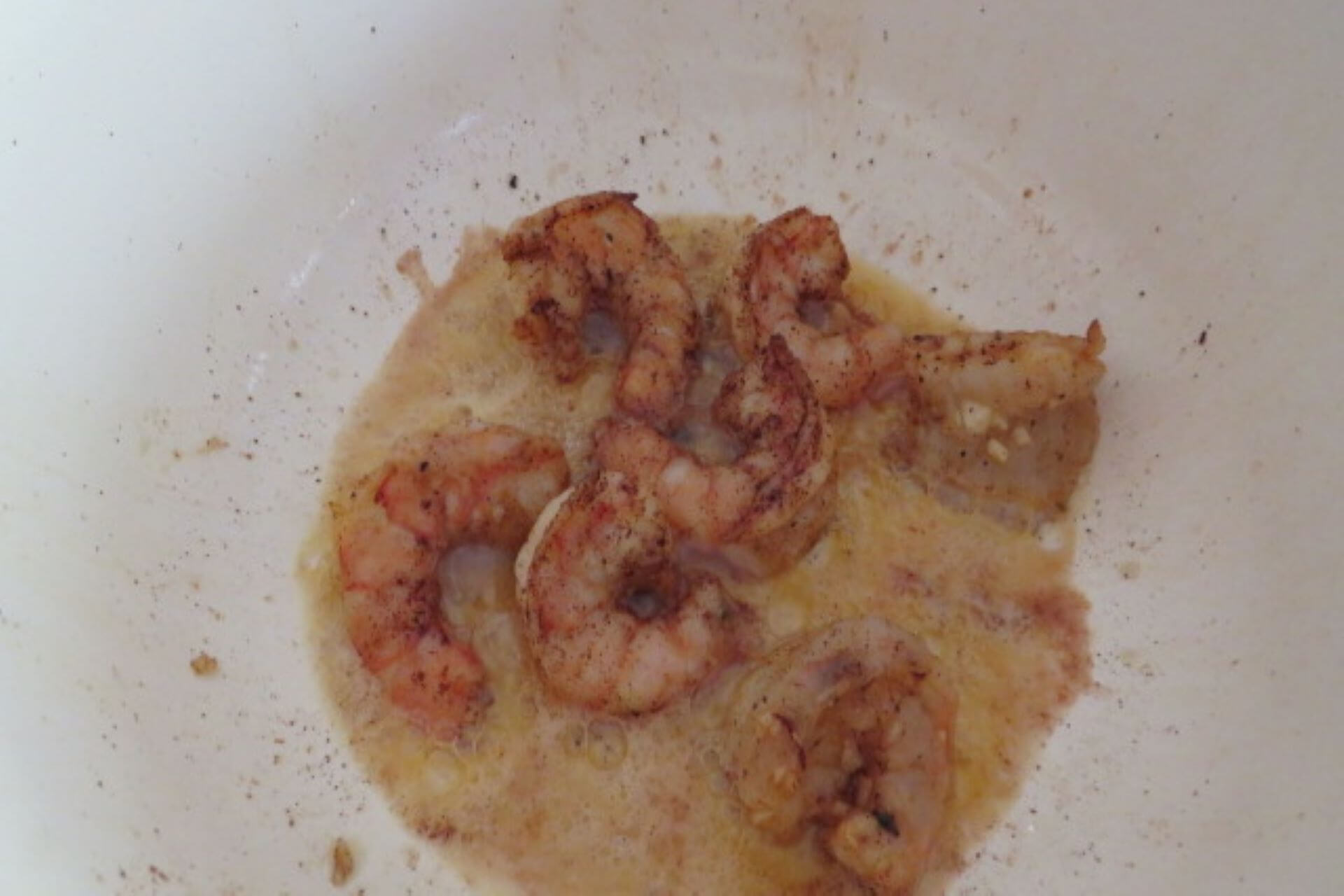
Sauté the shrimp in unsalted butter for 6 minutes on both sides. Remove and keep it aside.
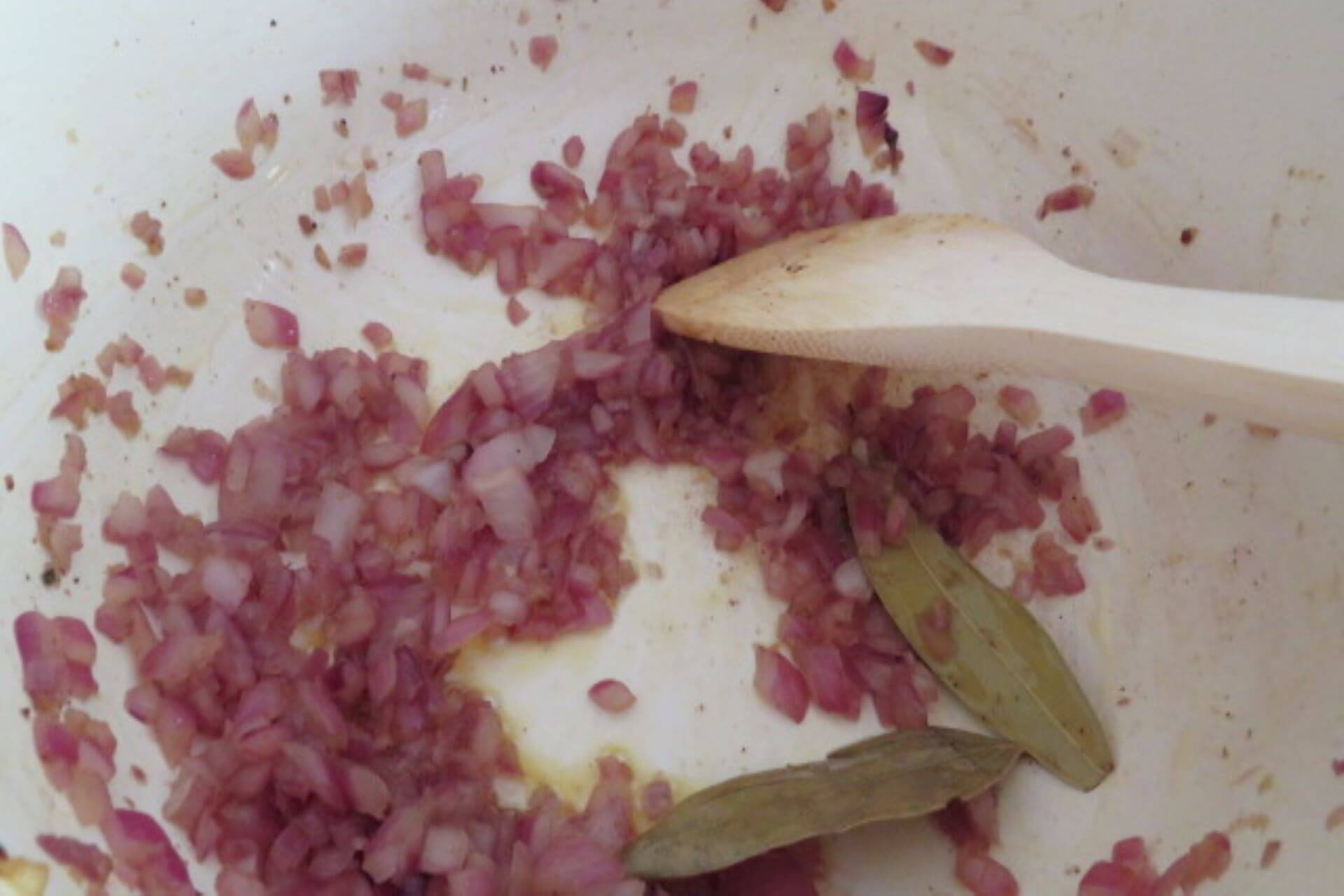
To the same Dutch oven add the garlic, olive oil and bay leaves for 30 seconds. Add the onion and sauté for 5 minutes or until browned.
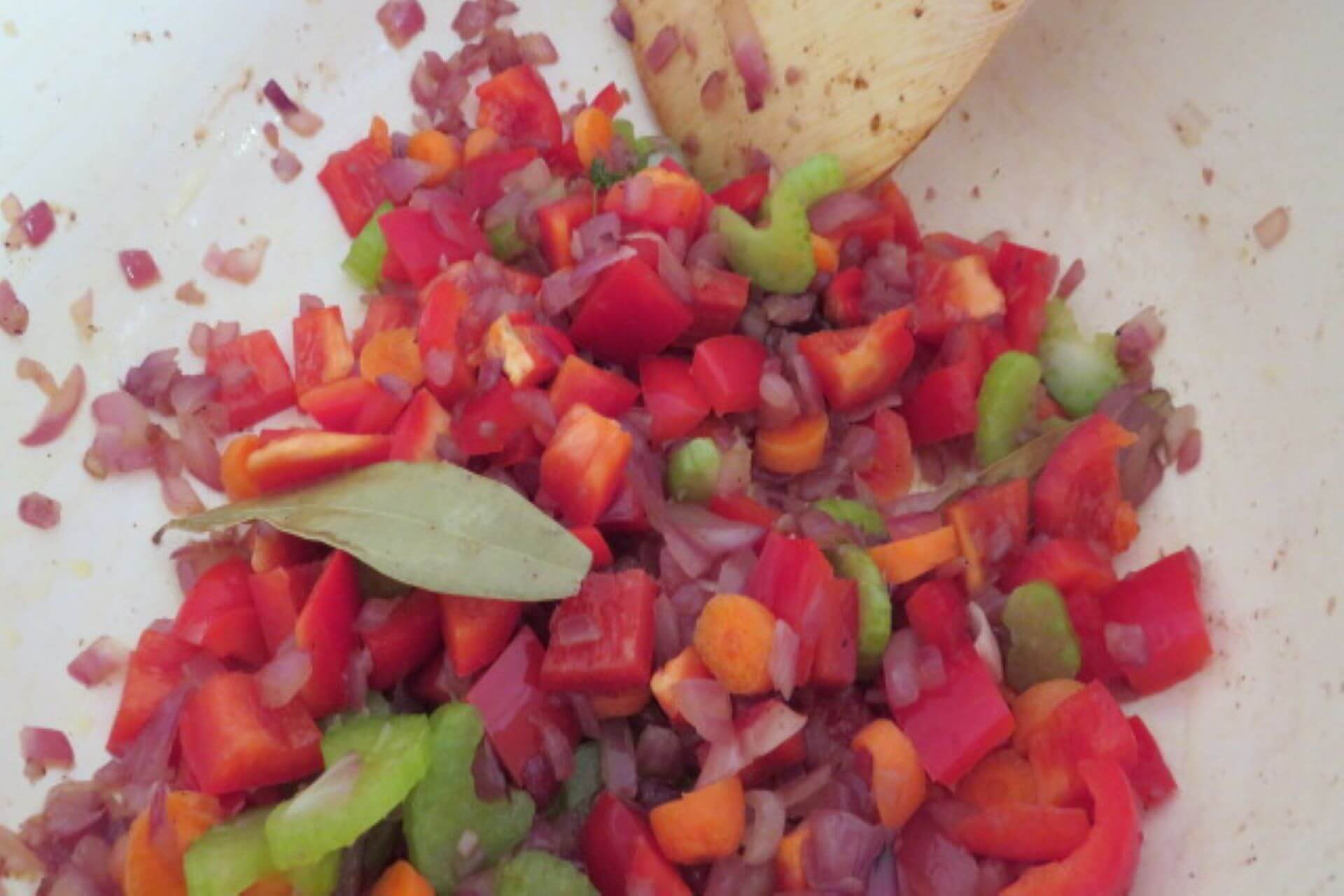
Add sliced celery stick, peppers, carrot, and sauté for 1 minute.
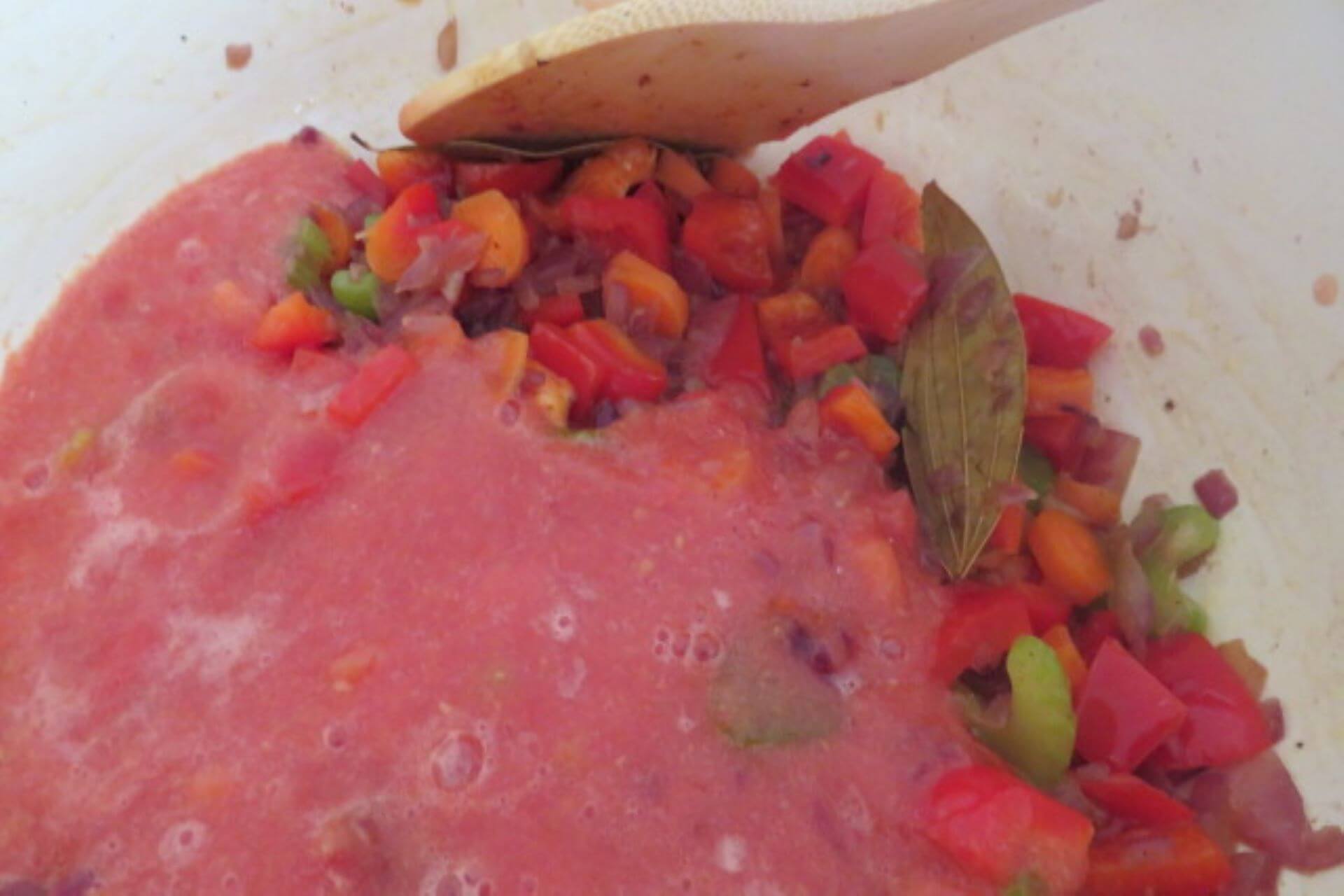
Add the tomato purée and 1 cup of water, boil and simmer on medium heat for 5 minutes or until desired thickness.
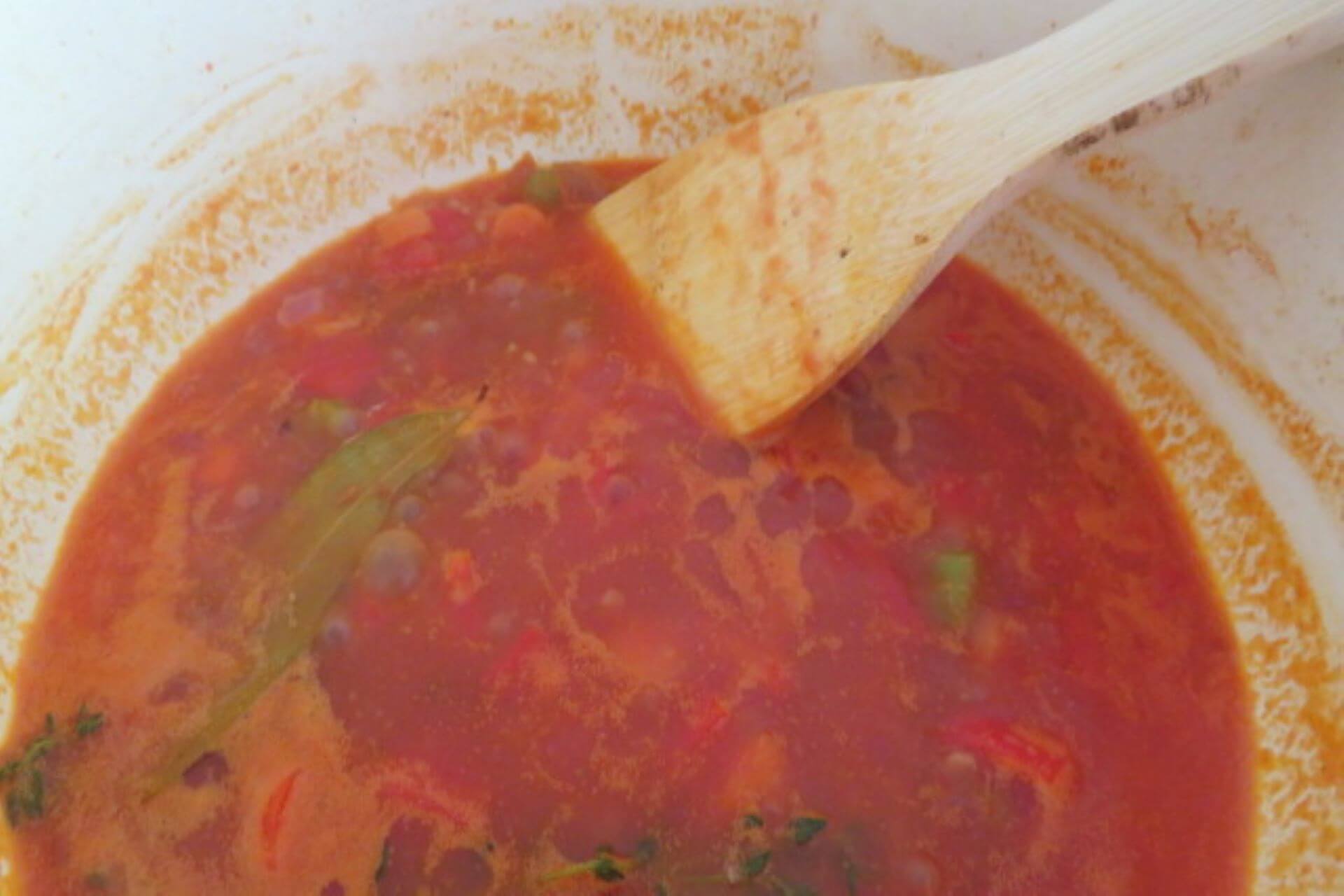
Add paprika, salt, ground pepper, and Worcestershire sauce. Make a slurry by stirring quinoa flour with 2 tablespoons of water, and almond flour.
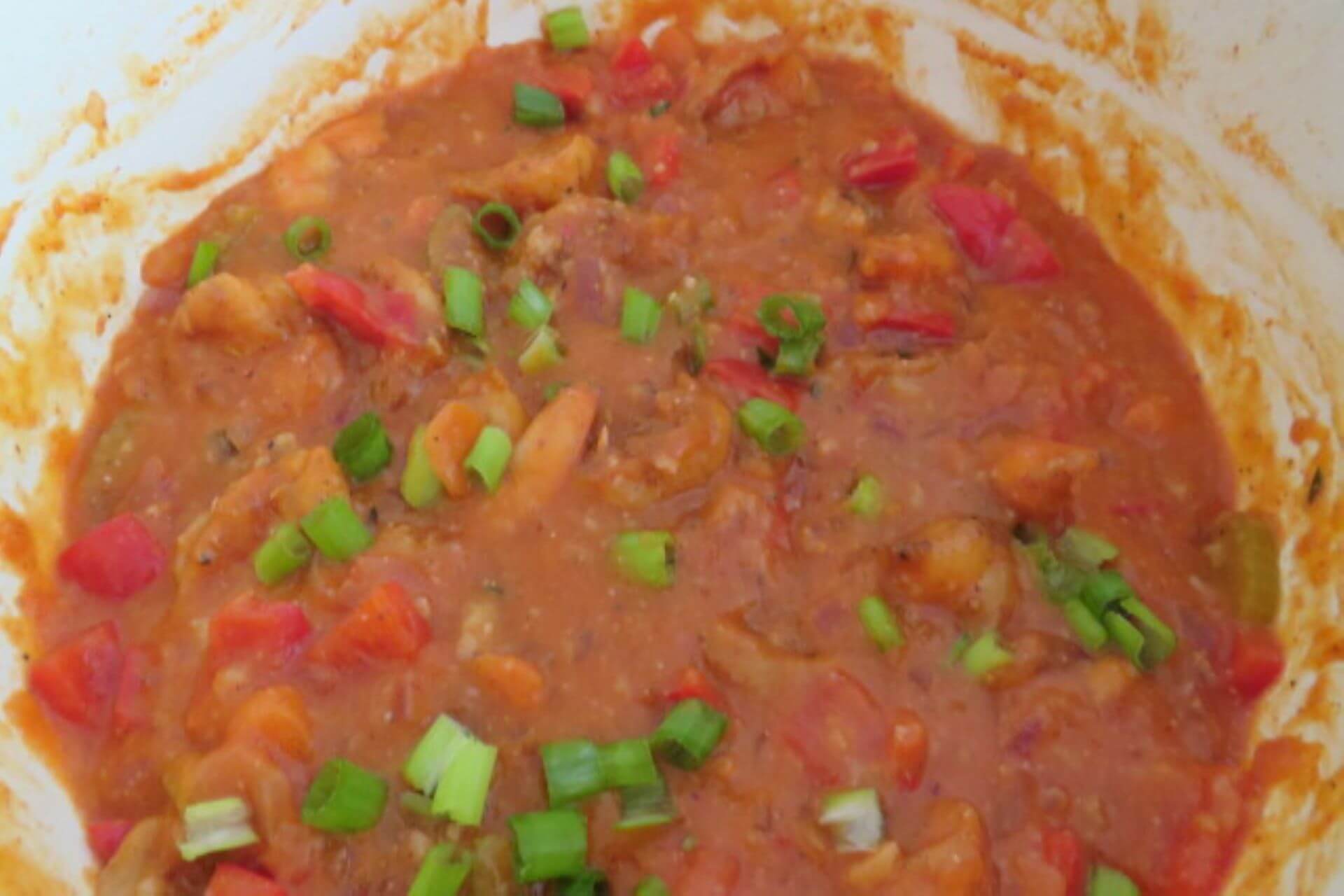
Add the precooked shrimp, Tabasco sauce and garnish with green onions or parsley.
Tips:
- Cook the shrimp until opaque and the tails curl for about 5-6 minutes. Overcooking the shrimp will make them tough and rubbery in texture. Rinse shrimp in cold water as warm water will partially cook the shrimp.
- Fresh shrimp that is peeled and deveined is perfect for this recipe. The quantity of shrimp must be proportional to the sauce. The flavor for this dish comes primarily from the freshness of the shrimp and the amount of shrimp used, so please follow the recipe measurements.
- Spiciness can be adjusted to your preference by adding more or less of the seasonings.
Serving suggestion:
This quick Shrimp Creole is served on a bed of fluffy rice. Feel free to serve it with any crusty bread, cooked quinoa or even freekeh.
Storage:
If you want to make it ahead of time, then prepare the sauce and freeze it in airtight boxes for three months. Allow the sauce to thaw in the refrigerator the day before, and then heat the sauce on low until completely heated through. Add the peeled and deveined shrimp and cook for 4-5 minutes. I have frozen the Shrimp Creole with shrimp for a couple of months and it can be refrigerated for 1-2 days.
Other shrimp recipes that you might like:
Easy Shrimp Creole
Equipment
- Dutch oven or heavy-bottomed pot
Ingredients
For the shrimp seasoning:
- ¾ lb shrimp peeled, deveined
- ¾ tsp cayenne powder
- ¼ tsp salt
- ¼ tsp ground peppercorn
- 2 clove garlic minced
- 2 oz unsalted butter
For the creole:
- 1 tbsp olive oil extra virgin
- 1 clove garlic minced
- 2 bay leaf
- 1 onion big, chopped
- 1 stalk celery chopped
- 1 red bell pepper chopped
- 1 carrot peeled, sliced
- 2 tomato blanched, pureed
- 4 sprig thyme
- 1 tsp paprika powder
- ¼ tsp ground peppercorn
- 1 tsp salt
- 1 tsp Worcestershire sauce
- 1 tbsp quinoa flour
- 1 tbsp almond flour
- 1 tsp Tabasco sauce optional
- 4 green onion
Instructions
Precook the shrimp:
- Heat a heavy-bottomed pot or Dutch oven with the butter. Add the shrimp mixed with the spices and cook for 5-6 minutes on both sides. Sauté the shrimp in two batches, remove and keep it aside.
How to make the Shrimp Creole:
- To the same pot, add the olive oil, bay leaves, garlic and onion. Sauté for 4 minutes on medium heat or until lightly caramelized.
- Add the pepper, celery and carrot and saute for a minute.
- Next, add the puréed tomatoes and a cup of water. Let it boil and then let it simmer on low-medium heat for 5 minutes.
- Add the salt and spices and sauces. Make a slurry using two tablespoons of water mixed with both flours and add to the creole.
- Once the creole has thickened to your desired consistency, add the precooked shrimp and turn off the heat. Garnish with green onions.
Notes
- The consistency of the Shrimp Creole can be adjusted by either simmering for longer to let the water evaporate and thicken or by adding more flour.
- You could choose to add the shrimp at the end without pre-cooking them. Simply add 3-4 minutes, in the end, to cook the shrimp in the sauce.
Nutrition


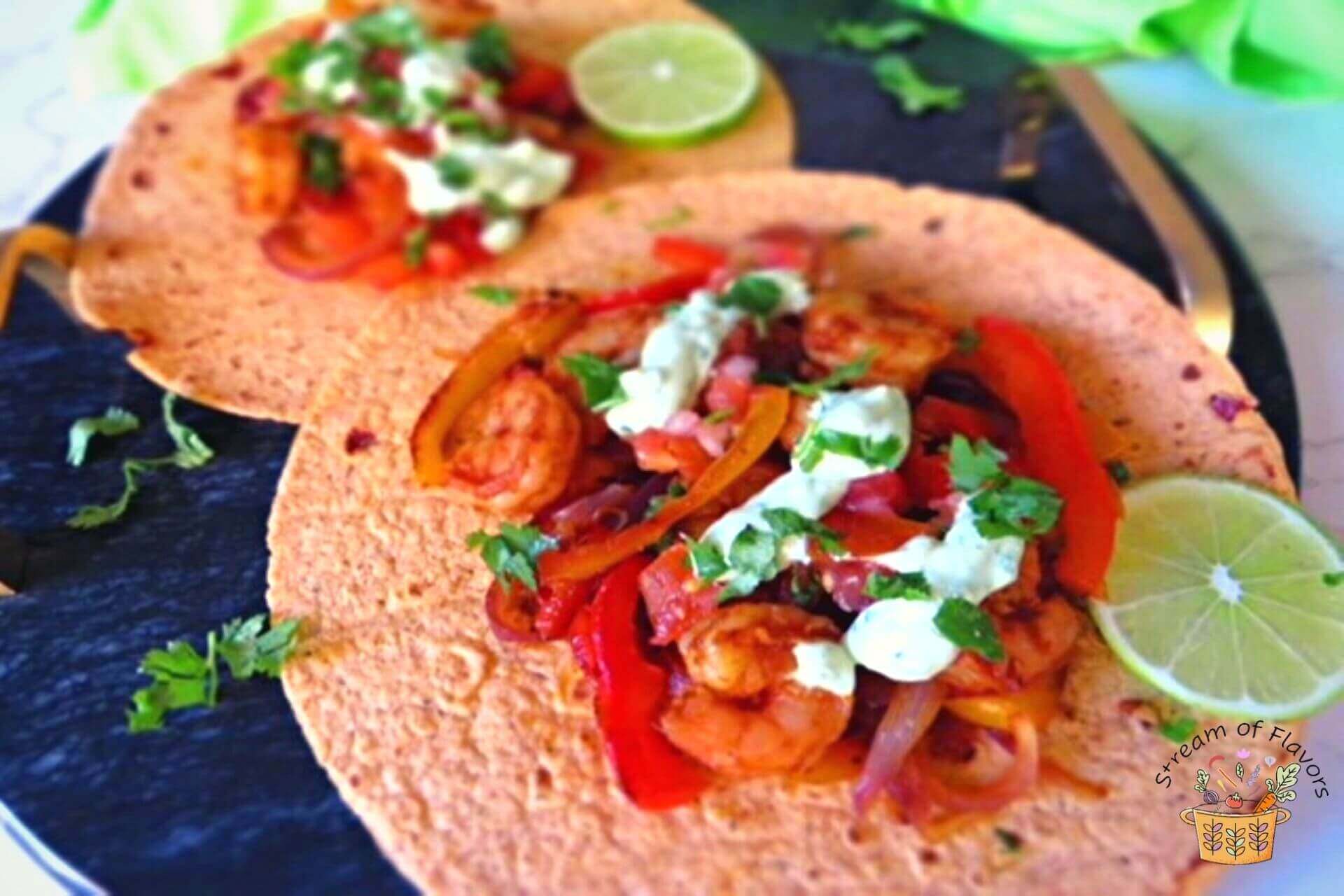
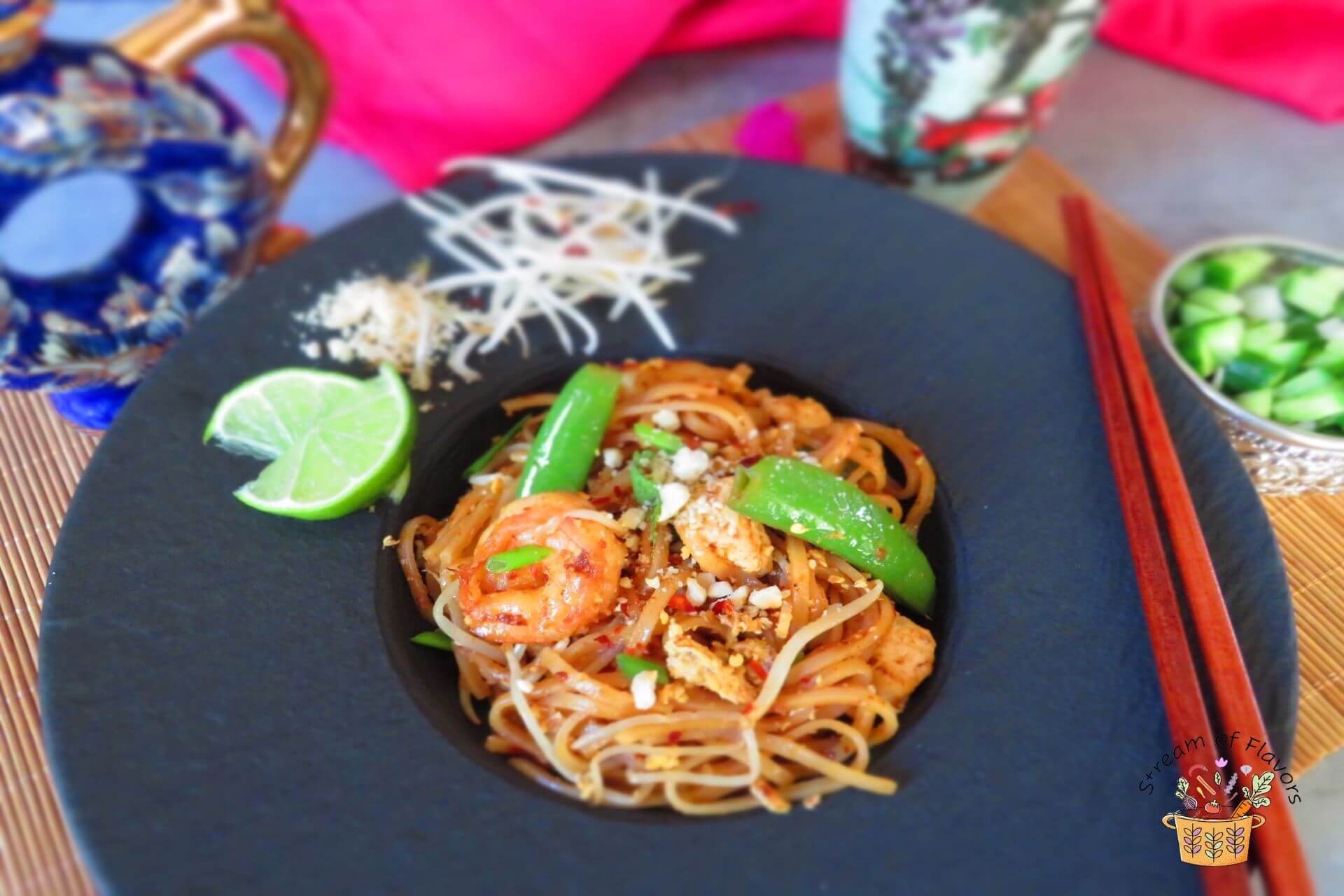
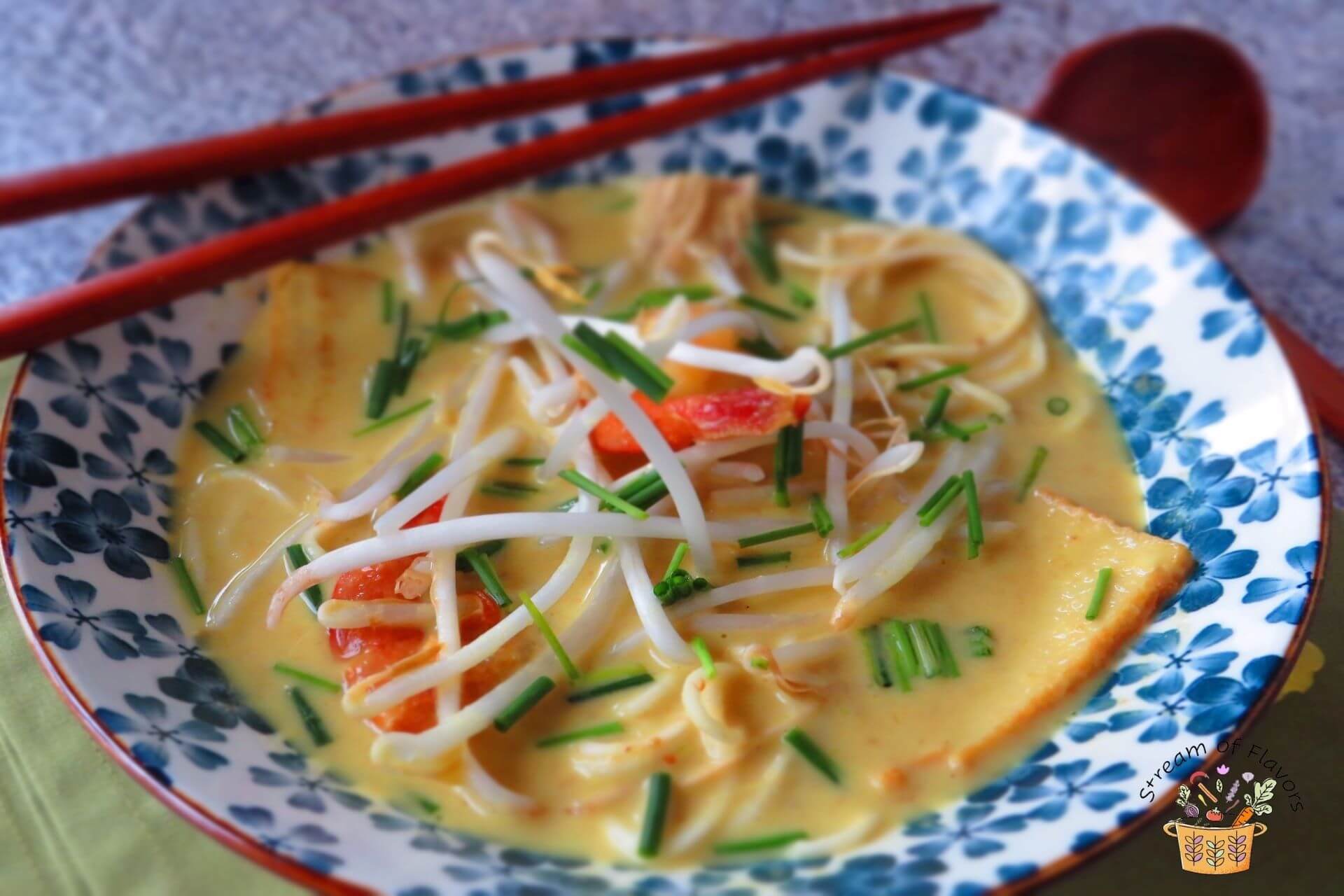
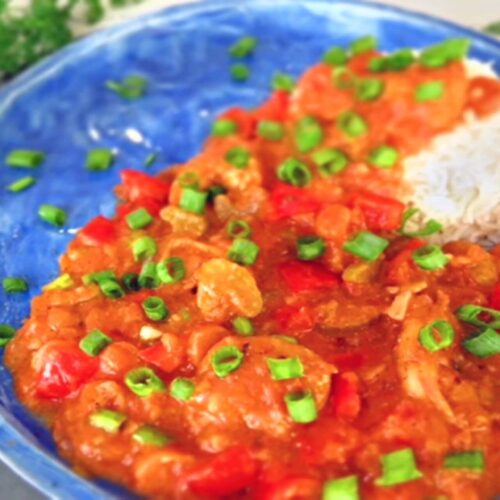
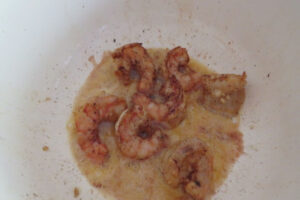
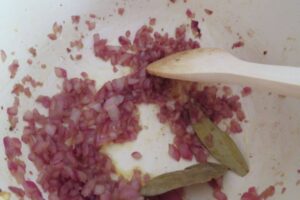
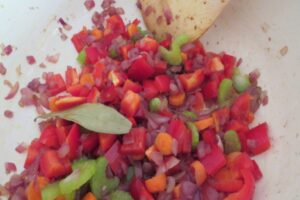
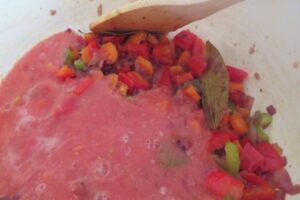
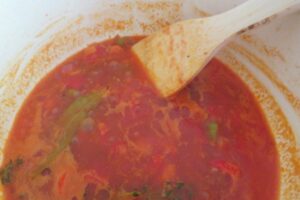
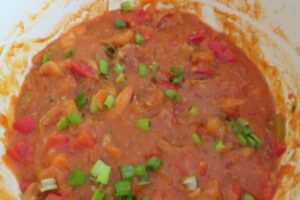





















0 Comments